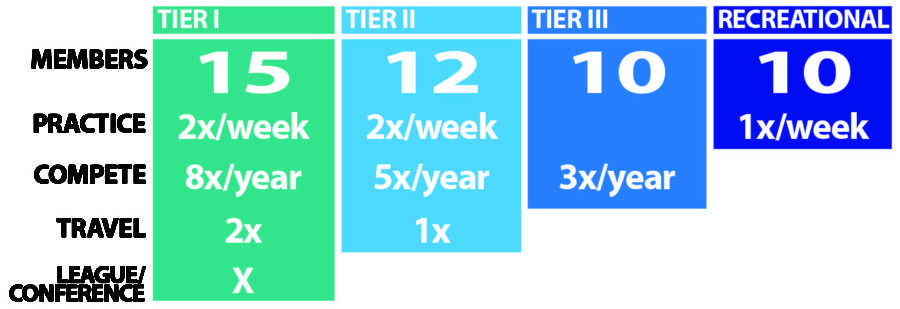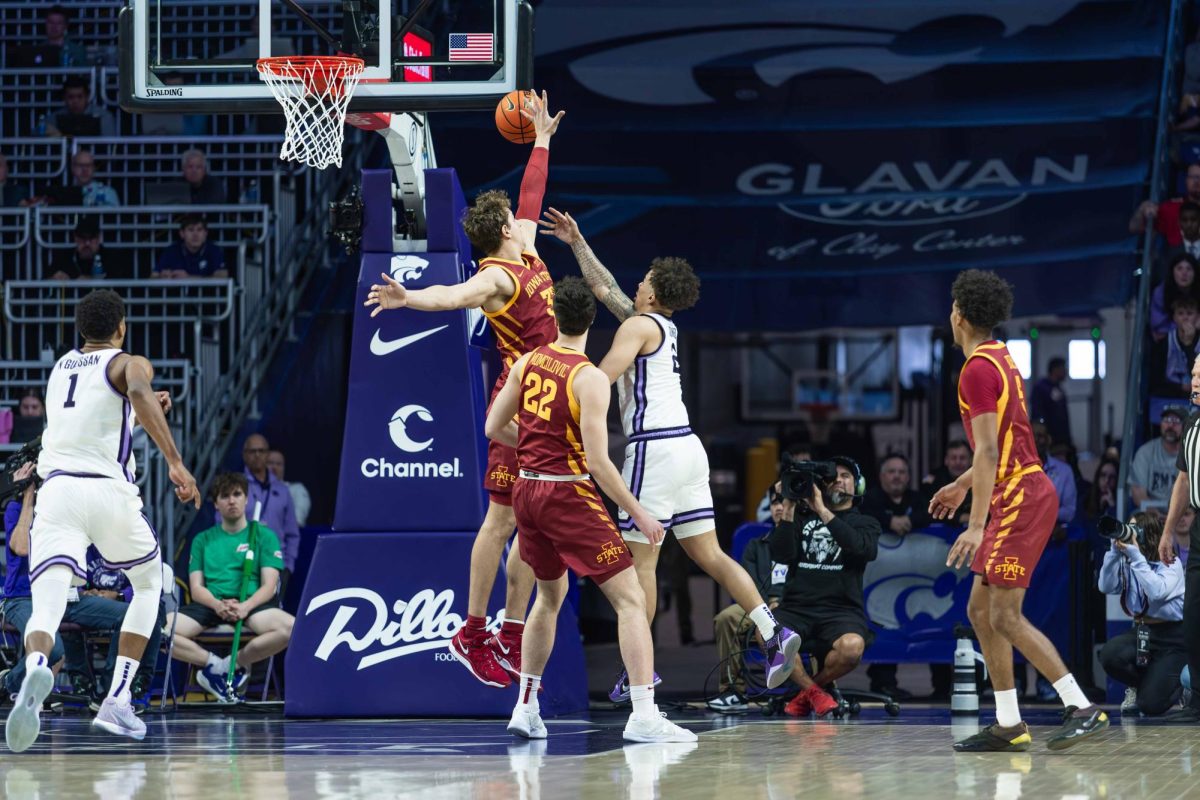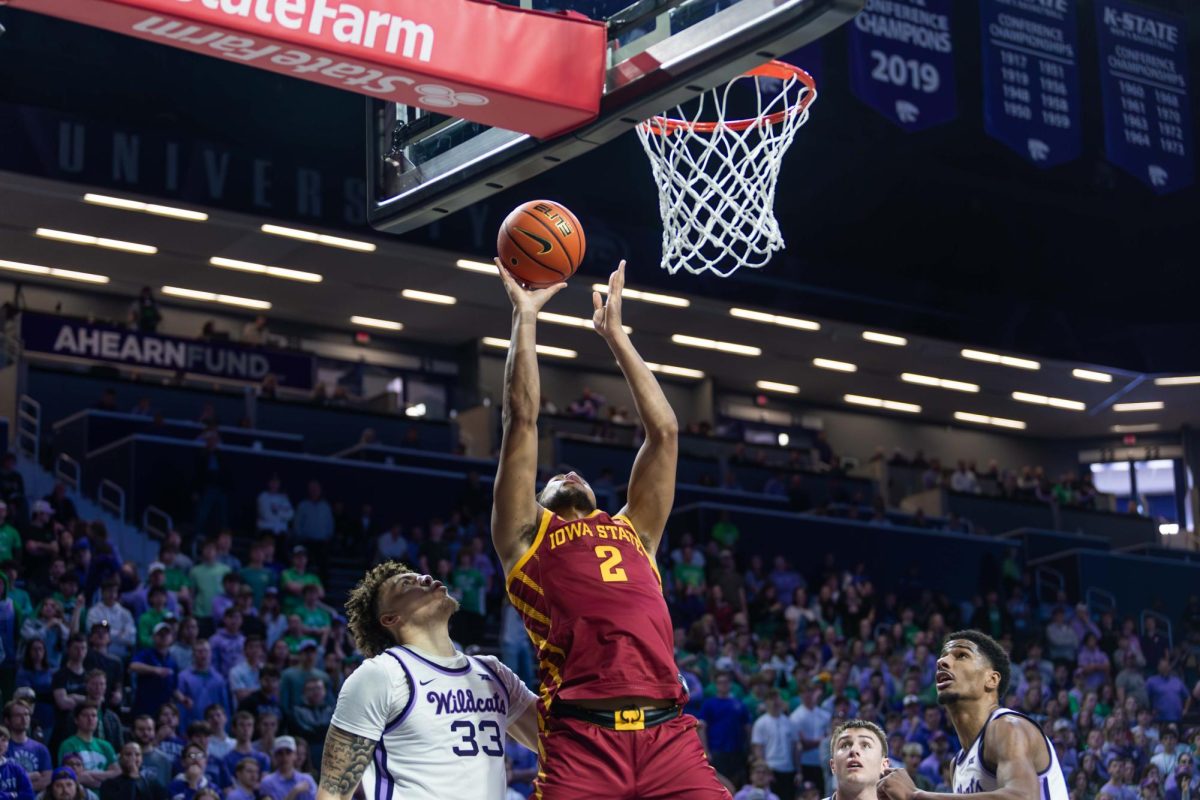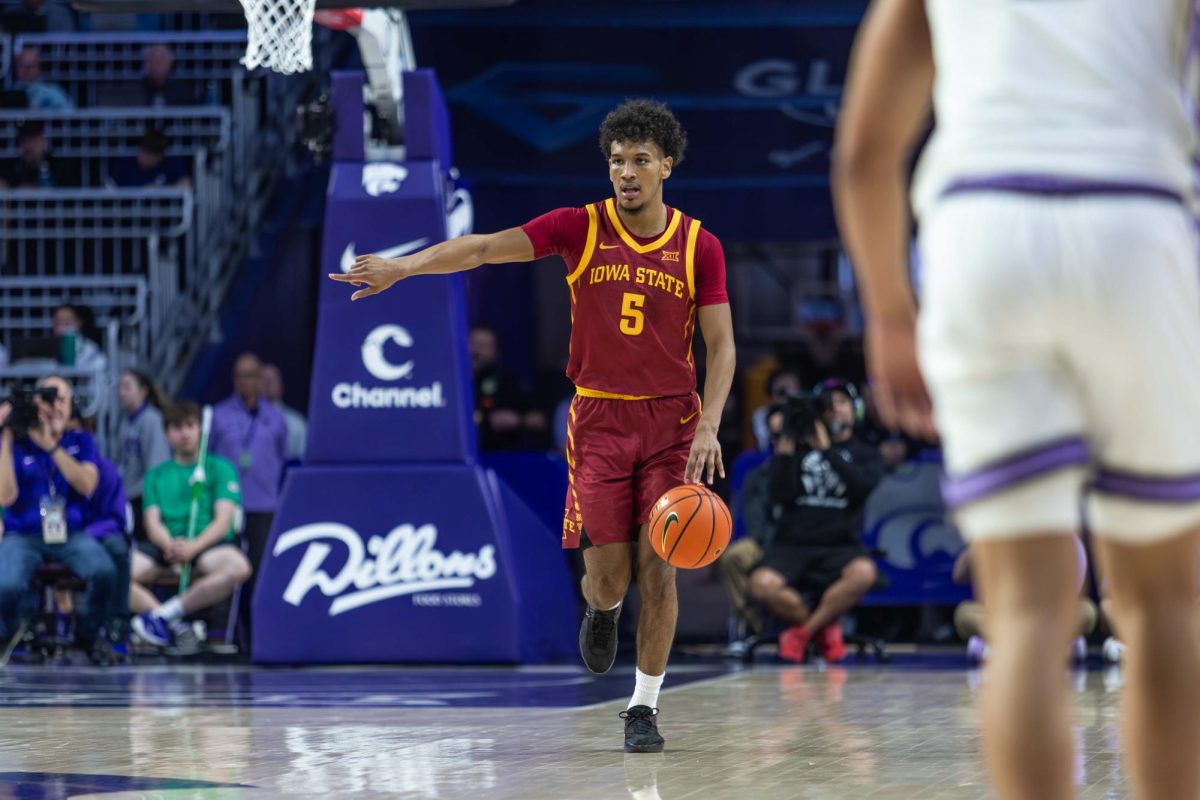Club Tier Restructuring
The above graphic indicates the specifications for each tier that a club can be classified under: Number of members, how often they practice, how often they must compete, how many times they travel, and whether they must be in a league or conference.
January 23, 2014
Starting next spring, the sports clubs on campus will have to earn their funding from the Government of the Student Body. A variety of aspects, including club size, competitions attended and national affiliation will be taken into account as a new system is implemented within the structure of club sports at Iowa State.
Landon Wolfe, coordinator of club sports, has been planning the installment of a multi-tiered structure since his arrival at Iowa State more than two years ago.
“When I got here, one of my main tasks was to reformat the clubs,” Wolfe said. “We have over 50 and they’re great and really active, but that’s a big group without much structure outside of the [Sports Club Council]. I took bits and pieces from different schools and came up with this tier system that I think will work out fine.”
The tier system, set to begin its trial run April 1, 2014 through March of 2015, will evaluate sports clubs based on membership, number of practices, league affiliation and number of home and away competitions. There will be four tiers total — I, II, III and recreational — each of which has its own percentage and absolute GSB funding cap.
“Some of the recreational clubs like Nordic Skiing or swimming are sports in a lot of people’s minds,” said Wolfe. “This system isn’t disputing that. Those clubs just don’t travel as much and therefore don’t need as much money. [Restructuring] will make sure that more money can go to the clubs that need it.”
The new club tiers format won’t be the ‘end all, be all’ Wolfe said. Clubs can move up the system if they meet the requirements and, therefore, can earn more funding.
Wolfe has already projected where every sports club will fall within the new format based on the information he already knows about each group. His predictions have drawn mixed reviews from Sports Club Council representatives.
“The new tier system won’t really have an effect on us right now,” said Payton Hand, senior in mechanical engineering and SCC representative for the Mountaineering and Climbing Club. “Initially I was [kind of worried], but I see where he’s going with it … it’s a good idea that more active clubs get more money.”
On the other hand, Cody Paggen, president of the Water Skiing Club, found himself in a tough situation when Wolfe’s projections had his club in a tier with a funding cap below its needs.
“We actually had a meeting with [Wolfe] to show him that we deserved to be in tier I,” said Paggen, a sophomore in agricultural systems technology. “We need that funding to cover lake fees and since we already pay for travel costs with member dues, it was going to be hard to keep traveling with the money we would’ve gotten in tier II.”
Though the estimations for where different clubs will fall has gotten varied reactions, Wolfe thinks he’s on the right track.
“This is going to be a trial run,” Wolfe said, “so if some things are out of whack we can revisit those areas. What this really is about is appropriately rewarding the clubs for what they’re doing, and I think it’ll go well.”







